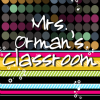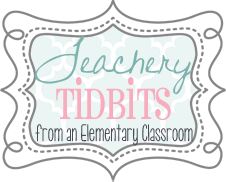Growing up online is a video that discusses how technology is taking over the lives of children in our society today. Everywhere you turn, at home, in school, everyone - technology is literally in the faces and hands of children around the world. This video discusses how technology can positively and negatively affect the lives of children today. Not just their social lives, but there personal lives as well and the family member around them.
1. A survey by the Pew Internet & American Life Project found that in 2004, 67 percent of parents said the Internet has been a good thing for their children. However, this number decreased to 59 percent in 2006. In 2012, 69% of parents of online teens said they were concerned about how their child’s online activity might affect their future academic or employment opportunities, with some 44% being “very” concerned. Cite some reasons why parental support for their children’s independent internet use is decreasing. Why do you think the number of parents who reported the Internet being a good thing for their children has decreased?
I think think that more and more parents are becoming aware that there is a lot going on in the internet world, than they are not aware of. Some parents are afraid of predators, while other are afraid of cyberbullying. On the internet, not everyone is who they say they are. Not every child understands the consequence of what they put out on the internet, or the information that they give away can do. Pretty much, these kids are letting strangers into their personal lives without even knowing it. Some children do not understand the dangers that they could encounter. I think the number of parents who reported the Internet being a good thing for their children has decreased is because these children do not know or understand the consequences that their actions may have.
2. More teachers are using tools to try to detect cheating or deter students’ inclination to cheat. In the program, we see the use of plagiarism-detection tools like Turnitin.com and writing assignments completed during class time to make sure students do their own work and generate their own ideas.
How can we as educators stop students from using material they found online as their own work? Should that be considered cheating, in your opinion?
One educator states in the video that we should take cheating as a given. He further states that we should also not simply say that cheating is cheating, but that we should better define what cheating is. Personally, I believe that cheating is cheating. Taking someone else’s words, ideas, etc. is simply that - THEIRS. It does not belong to you if you did not say it or come up with the idea yourself. I think that the teacher who thinks that not all cheating is cheating, is wrong. I do not agree that rules should be bent, or that students should learn that cheating is okay sometimes. I think that cheating is wrong all the time.
3. One student claims he "never reads books" but relies on summaries and annotated notes he finds on Web sites. He confesses that he feels guilty about this, stating, "I feel like I kind of cheated it."
In your opinion, should he feel guilty? Why or why not?
Yes, in my opinion he should feel guilty. He took a shortcut because he said he “didn’t have time” to read it. He said that he feels like he owes it to himself to read it, but that he doesn’t have time. He also acknowledges that he would have enjoyed reading it if he had. So, not only did cheat the read by taking a shortcut with sparknotes (and going against his school policy), he has cheated himself out of a good read. Romeo and Juliet is a classic story (that is the story he did not read) and had he read it in the first place, he would have been doing the right thing. He would’ve also had the opportunity to read a classic story, and as a teenager, it may have been a story that he could’ve related to since Romeo and Juliet were teenagers as well.
4. Before the Internet, in order to be seen by the world, you had to be portrayed in some form of mass media, and you had to be famous in some respect -- in the news, in politics or as a celebrity. Now anyone can be seen online by anyone else in the world. Some people have become famous for videos or photos they’ve posted (such as Autumn Edows).
In your opinion, should people like Edows, or others who become “ famous” through their online presence, be considered “celebrities?”
Has the ability to create an online persona, and receive worldwide attention for it, affected our cultural values?
In my opinion, no - I do not think that people should be famous for posting videos or pictures online. People should be famous for their talents - like singing, dancing, acting etc. Anyone can go online and posts videos or picutres. I think the the ability of creating an online persona, where people can view videos and pictures of people worldwide has had a defining impact on our cultural values. Anyone can posts videos and pictures online - anyone. In society today, younger generations think that the more “likes” you get on social media makes you “famous” or “popular”. But they don’t realize, someone who sings good and someone who sings bad can both post a video singing the same song. Does it make them famous? - No, I don’t think so. Talent is what makes a person a famous.
5. Shows like "To Catch a Predator" on Dateline NBC (http://www.nbcnews.com/id/10912603/) contribute to parental anxiety about online media. It is obvious that certain elements of programs like “To Catch a Predator,” and even this documentary, will likely increase parents’ fears.
Cite one current event from the past year where a young person has been affected (positively or negatively) by being active online. (find a linkto a news story, describe it in your answer to this question, and provide the link as well). Click here to see an example of what I’m looking for.
Rebecca Sedwick is a 12 year old girl who jumped to her death in September of this year She was bullied online, not by social media that everyone is aware of, but but new media. This article discusses how these new cites can be a harmful source and a new way for cyberbullying. These cites are ask.fm and KIK. These are cites that everyone should be aware of. Cites like these, and cyberbullying led to the death of Rebecca Sedwick, a 12 year old girl.
http://www.cnn.com/2013/10/10/living/parents-new-apps-bullying/index.html?iref=allsearch
6. Teasing, lying, gossiping, threatening, spreading rumors or harassing online (and offline)can severely affect people’s self-concept and self-esteem and have an impact on their emotional state. In the program, we see one girl who describes flirting with boys and then revealing she was just kidding. She explains: "You wouldn’t do that to someone’s face, but online is completely different. ... No one can do anything. You’re at your house, they’re at their house."
In her quote, this teen is describing Suler’s disinhibition effects. Which one do you think it is, and why?
She was describing the Invisibility disinhibition effect. This has the effect of “you can’t see me”. While having an online conversation with someone, they cannot hear your voice, hear your reaction, or see the look on your face and vice versa. While online, you may do or say things you wouldn’t otherwise do. You can say what you want, and they cannot do anything about it. Simply, you are invisible in the online world.
7. At the end of the program, Greg decides it’s time for him to "disconnect" by going to the Coast Guard Academy, where he will spend seven weeks without cell phones or the Internet.
Have you ever thought about "disconnecting" from it all?
Do you think it would be easy or difficult for you personally?
What would you enjoy or dislike about disconnecting?
I have never thought about “disconnecting” from it all. I remember using the internet when the internet first started. I was a teenager, and since then, the online world has been a big part of my life. I use the internet for online schooling, research, and I do use facebook but I do not get on there every day. I think, if I ever wanted to disconnect, that it would be easy to do. Of course I do rely on the internet for information, I could still find other ways to get the information I need. However, I would still NEED to use the internet for my college courses. Cell phones are another story - I only have one phone, a cell phone. I do not talk on my phone all the time, but I do have it on my all the time in case of emergencies. I do not have a house phone, so my phone is something that I could not give up - simply because it is the only way I can make a phone call. However, I do have a smart phone, and I could easily disconnect from the smartphone world, and go back to a regular phone. It would be hard, because I’m so used to it (that would be the thing I would dislike about it), but I could do it!














